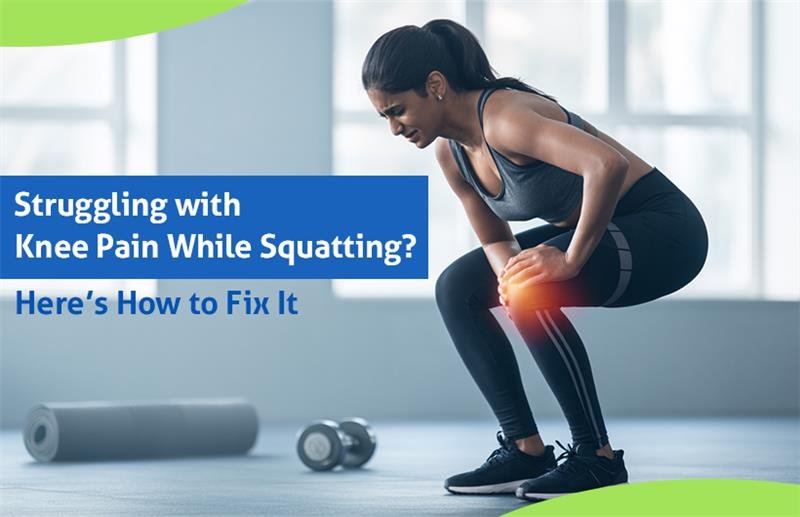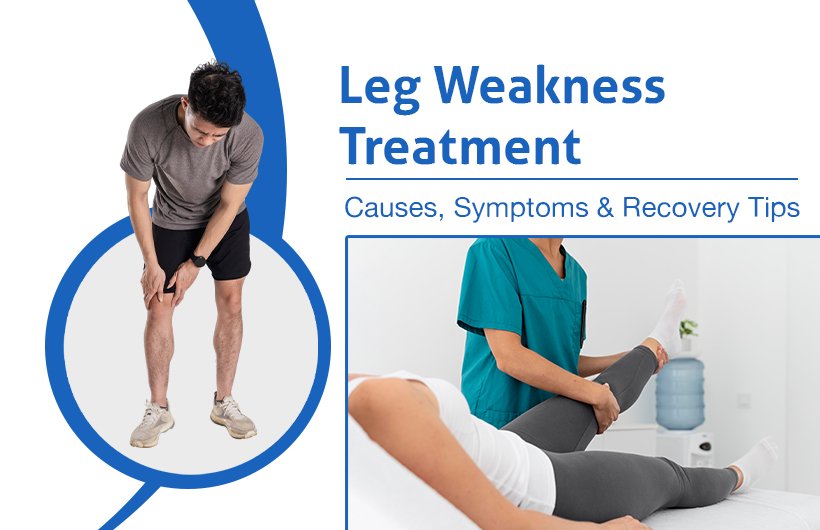Experiencing knee pain while squatting isn’t just frustrating; it’s a red flag. Whether you’re a fitness enthusiast, a beginner trying to improve your lower body strength, or someone simply trying to stay active, pain in the knees during squats can slow you down or stop you altogether. This article breaks down the real reasons behind knee pain when squatting, what it means if it’s just your left knee, and how to fix it with the right approach.
This guide also takes you through when you should see a specialist, such as Dr. Samip Sheth, who is one of the orthopaedic specialists in Ahmedabad.
Why Do You Experience Knee Pain While Squatting?
Knee Pain while squatting is usually due to poor technique, muscular imbalance, injury history or existing joint diseases such as patellofemoral syndrome or mild osteoarthritis.
Here is a more detailed breakdown:
- Bad Squat Technique: Allowing knees to roll inward, allowing your knees to cave inwardly (valgus collapse) or bending over too far (flexion beyond toes) or not using glutes adequately may also lead to knee pain.
- Muscle weakness: Muscle weakness involving the quadriceps, hamstrings, or hip abductors may lead to poor alignment and overloading of the knee joint.
- Restricted Mobility: Restricted mobility on the hips, ankles, or the calf muscles compromises range of motion and forces the knees to accommodate, causing discomfort.
- Previous trauma or overuse history: These may involve previous trauma or overuse that makes the knee joint more sensitive when it is loaded intensively with movements such as squats.
Is left knee pain while squatting Normal?
When one knee is sore (maybe the left) than the other knee, do not neglect it. One-sided tenderness is an indication of:
- A small soft tissue injury of the left knee, either ligament or meniscus damage.
- Inequality in the loading of the body that prefers one side over another, unconsciously
- Injuries of the left side that had not fully healed before
- Poor right and left side balance in your muscles
The first step towards fixing it is awareness. Monitor your position and weight usage with squats and other exercises involving the lower body. Otherwise, it is also advisable to seek an evaluation from a specialist when the pain does not go away.
Types of Knee Pain While Squatting and What They Mean
- Sharp, sudden pain: Possibly a ligament tear or meniscus injury
- Pain behind the kneecap: Could indicate patellofemoral syndrome
- Popping or clicking sounds: May be due to misaligned tracking of the kneecap or cartilage wear
Understanding the type and location of your knee pain can help determine the best course of action.
How to Fix Knee Pain While Doing Squats
1. Master Your Form
Proper squat mechanics protect your joints. Keep these basics in check:
- Keep your knees in line with your toes
- Push your hips back and down
- Avoid letting knees go excessively forward
- Distribute your weight evenly through the heels and mid-foot
- Engage your core and glutes throughout
2. Improve Ankle and Hip Mobility
If your ankles or hips are stiff, your knees are forced to compensate.
Try:
- Ankle dorsiflexion drills (e.g., knee-to-wall exercises)
- Hip openers like deep lunges or pigeon pose
- Foam rolling for calves, quads, and glutes
3. Strengthen Supporting Muscles
Focus on:
- Quadriceps: Leg extensions, front squats
- Hamstrings: Romanian deadlifts, glute bridges
- Glutes and hip abductors: Clamshells, lateral band walks
These muscles help stabilise the knee during movement.
4. Use Modifications If Needed
If squats hurt, modify them.
Try:
- Box squats low range of motion
- Wall sits are used to develop strength without the use of motion
- Resistance band squats to help with proper tracking
5. Not to Miss Recovery
Active and passive recovery give a rest to the joint, and healing is possible through ice and rest. One should not force him/herself, as far as pain often complicates the situation.
How Do You Know When to See an Orthopaedic Doctor?
You are advised to refer to the orthopaedic specialist in the case of:
- It has a duration of over 12 weeks or 2 weeks of pain despite rest and correction
- It is accompanied by swelling, instability or locking
- You already had an old injury to the knee, and the symptoms have reappeared
- You will not be able to do anything in your daily activities without experiencing some pain
Ignorance of the persistent pain can further contribute to the aggravation of the damage and further result in the condition of chronic condition.
Why Dr. Samip Sheth is the Right Choice for Knee Pain in Ahmedabad
Dr. Samip Sheth, one of the well-known orthopaedic specialists at Ahmedabad, can help diagnose effective treatment schedules for knee pain treatment accurately. Regardless of early-onset arthritis, ligament-related problems or biomechanical imbalance, his practice involves clinically informed practice and encompasses contemporary diagnostics and rehab prescriptions.
- Individual attention according to your motor habits
- Consipid diagnostic imaging and physical evaluation
- Non-invasive and invasive alternatives, depending on your requirements
- Active lifestyle-specific recovery protocols
Whether you have been seeking a Knee pain specialist near you or want to consult an experienced orthopaedic doctor in Ahmedabad to know the solution to your knee and joint-related problems, the clinic of Dr. Samip Sheth is the place to go.
Final Thoughts
Squats cause knee pain, and one should not ignore them. Your body is trying to make you learn that something is out of order, either in your figure, muscles, flexibility, or an inner joint problem. The change can be considered huge and small, at the same time; however, pain should never be dismissed or remain persistent or increase.
Book Your Consultation with Dr. Samip Sheth Today
If you’re tired of guessing what’s wrong and want a permanent solution, it’s time to consult an expert. Dr. Samip Sheth, a leading orthopaedic doctor in Ahmedabad, helps people just like you get back to squatting pain-free.
Take the first step toward stronger, healthier knees and schedule your consultation today.







